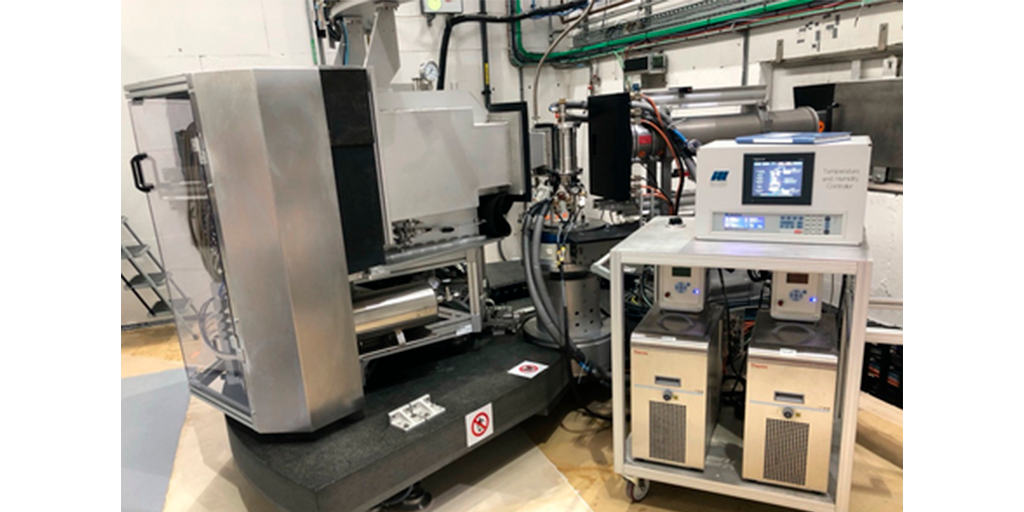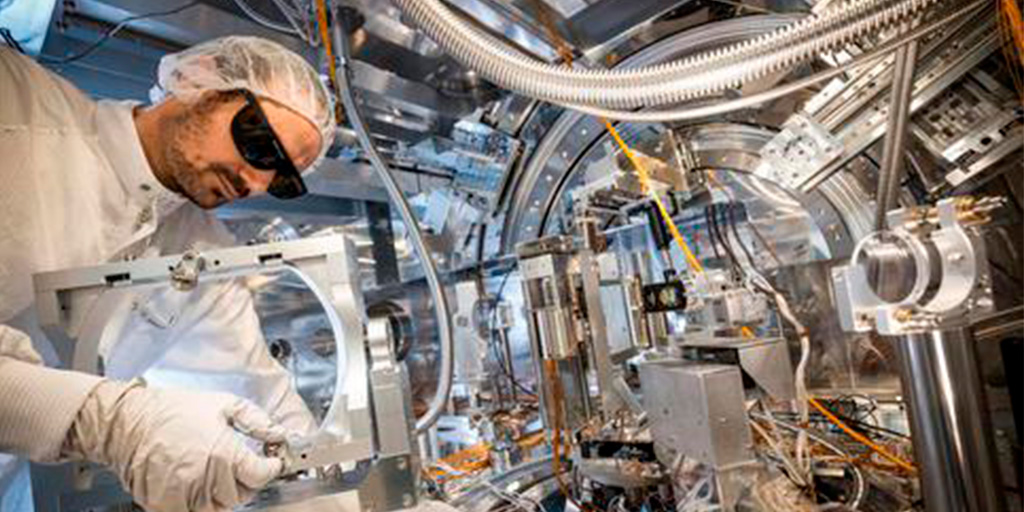The global need to transition to a sustainable and clean energy future has brought hydrogen to the forefront as a promising clean energy carrier. Efficient and safe storage is a key challenge and hydrogen storage in activated carbons is a promising option. Investigating the fundamental interactions between hydrogen and nanoporous carbon at the atomic level can provide vital information for enhancing the storage efficiency of these materials.
Neutron scattering is sensitive to hydrogen, thus opening the possibility for many different insights. This paper reports on a SANS (Small-Angle Neutron Scattering) study using ILL’s highly versatile neutron diffractometer D16 to investigate hydrogen and deuterium adsorption in nanoporous activated carbon cloth as a function of (micro)pore size. These findings will contribute to a better understanding of the processes involved and will influence the design of materials for efficient hydrogen storage devices working at realistic cryogenic conditions and low pressures.
Neutron diffraction is a powerful and often unique tool for looking inside things. In a recently published study, neutron scattering measurements performed at ILL are used to investigate hydrogen (H2) and deuterium (D2) storage in nanoporous activated carbon cloth.T he goal is to help gain a more comprehensive and quantitative understanding of how the hydrogen density achieved evolves with pore size variation for the two isotopes, H2 and D2 , at realistic cryogenic conditions and low pressures.
Hydrogen is the lightest and most abundant element in the universe. It can be obtained from various sources, including water and biomass. It also has the highest energy per mass of any fuel, and an environmentally friendly nature if produced using renewable energy sources. Hydrogen can play an important role in decarbonizing industries that are difficult to electrify and can be used in clean and highly efficient fuel cells with applications ranging from portable electronic devices to vehicles.
While one kilogram of hydrogen contains more energy than one kilogram of any other fuel, it may take a lot more space. The boiling point of hydrogen at normal atmospheric pressure is −252.8°C, which results in a very low density and thus a very low energy per unit volume at atmospheric temperatures. In other words, while the energy per mass content of hydrogen is very high, the energy content per volume is particularly low. For storage, hydrogen is usually liquefied or put under high pressure. Nevertheless, compressed gas and liquid hydrogen storage methods have limitations in terms of energy densities and also raise safety concerns.

About ILL
The Institut Laue-Langevin (ILL) is an international research organisation that is a world leader in Neutron Science. Since its foundation in 1967, the Institute is a shining example of scientific cooperation. Presently 10 European countries (Spain, Switzerland, Austria, Italy, Czech Republic, Sweden, Belgium, Poland and Slovakia) ensure the necessary financial support for the ILL operation under the governance of 3 Associate Member countries: France, Germany and The United Kingdom. The research conducted at the ILL is dedicated to fundamental research (60%) as well as societal challenges research (40%). It covers a wide range of disciplines such as biology, (green) chemistry, materials science, condensed matter physics, as well as nuclear and particle physics.
The global need to transition to a sustainable and clean energy future has brought hydrogen to the forefront as a promising clean energy carrier. Efficient and safe storage is a key challenge and hydrogen storage in activated carbons is a promising option. Investigating the fundamental interactions between hydrogen and nanoporous carbon at the atomic level […]



